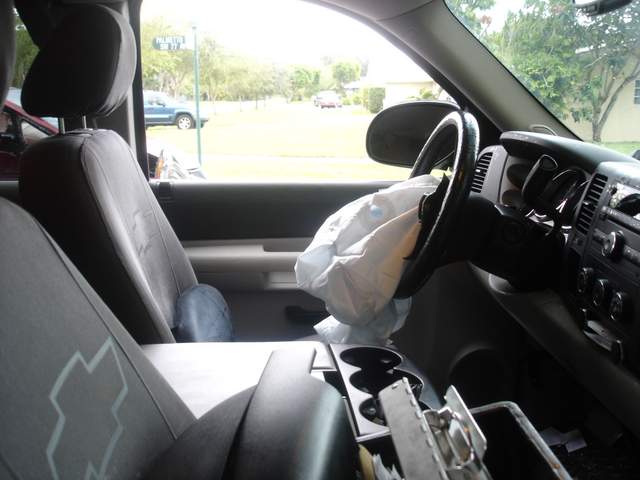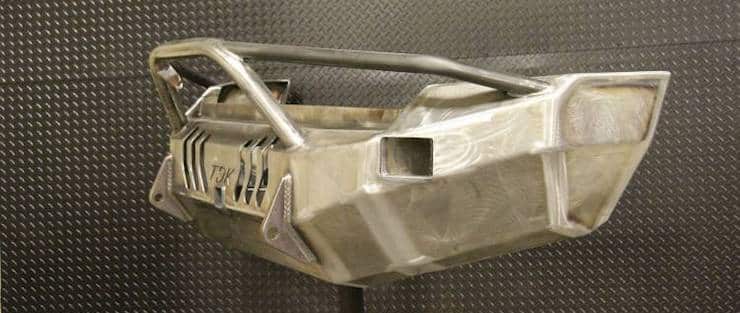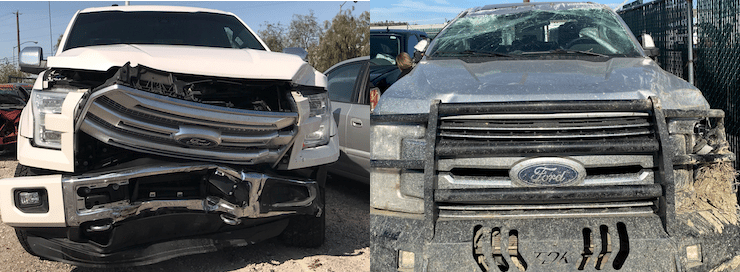When shopping for a steel bumper for your truck, you may have asked yourself if aftermarket bumpers affect the operation of airbags. OE bumpers are designed to crumple and absorb energy while working in unison with your truck’s other safety systems. Aftermarket steel bumpers are made to withstand damage and prevent damage to your vehicle.
The answer depends on a number of factors including the type of bumper, how it was made, and how it was installed. It also depends on the area of impact and what type of force was applied to the vehicle. We’ll cover these factors as well as the benefits of steel bumpers in this article.
NOTE: If you have questions about whether or not steel bumpers are safer than OE bumpers, this link provides good information.
How Airbags Work

First, it’s important to understand how airbags work and the safety they provide. Airbags provide an additional layer of protection, reducing the possibility of a head, neck, or spine injury during an accident. They work almost instantly, deploying when a vehicle collides with an object large enough to trigger the airbag sensors. These sensors are placed around the vehicle and when one is triggered, it sets off a charge to inflate the airbags with nitrogen gas. The airbags inflate in just a few milliseconds. Then they quickly deflate as a person comes into contact with it, softening the impact.
How Steel Bumpers Affect Airbags

Aftermarket bumpers are created with thick pieces of steel. They are much stiffer than stock bumpers which are designed to crumple on impact. By crumpling, the stock bumper absorbs the force of the impact and then triggers the airbag deployment.
Since aftermarket bumpers are thicker and more rigid, they do not crumple like stock bumpers and usually absorb less force. In theory, this means the more rigid steel bumper will cause the airbags to deploy a fraction of a second faster than a stock bumper but should have no bearing on the effectiveness of the airbag in preventing injury.
However, there are a number of other factors that could impact airbag deployment and the safety performance of the steel bumper:
- The thickness or gauge of steel
- The construction of the bumper including the quality of welds and internal supports
- If the steel bumper was manufactured to OE specifications or not
- If the steel bumper was installed correctly using the correct hardware
One final thing to mention about airbags – the performance and effectiveness of airbags as a safety system are also dependent on the condition of the airbag components including the sensors, inflation system, and the airbags themselves. Assuming the airbag’s components are in good operational condition and the aftermarket steel bumper is of good quality, meets OE specifications, and was installed correctly, there should be no impacts on safety.
Benefits Of Aftermarket Steel Bumpers

Above: A post-impact comparison of an OEM bumper and TDK bumper.
Well-made aftermarket steel bumpers provide a lot of benefits for your truck including:
- Improved capability and versatility – steel bumpers are almost a must-have item if you plan to use accessories like a winch or additional lighting that could damage or deform a stock bumper.
- Better towing, extraction, and recovery performance – if you tow, perform vehicle recovery work, or use your truck to pull or extract heavy items, a steel bumper is an absolute must.
- Longevity – A steel bumper is more durable than an OE bumper and will stand up to lots of abuse and look good for years to come.
Whatever bumper you’re looking for, Throttle Down Kustoms bumpers will protect your truck from the elements. All our TDK bumpers are laser cut and hand welded in Montana and come with a lifetime warranty. If you also need custom work we can handle that too.
Contact us if you’ve got any questions!
